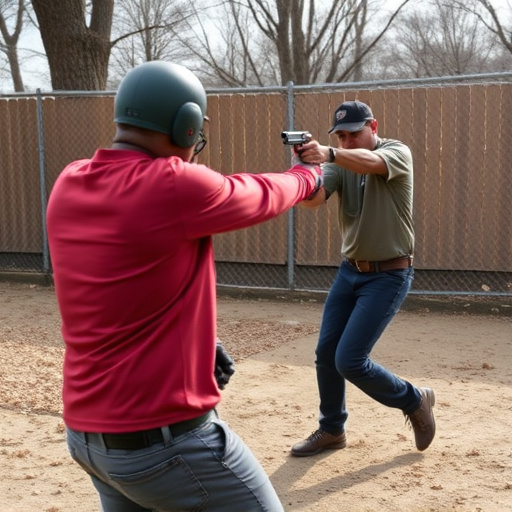Understanding and adhering to regional laws is crucial for legally carrying pepper spray for self-defense, with varying jurisdiction guidelines on age restrictions, permits, container size, and accessibility. Research local regulations, choose reputable "law enforcement grade" products testing for effectiveness, and store pepper spray safely yet accessible. Proper usage involves targeting vulnerable areas and following up with a second burst if needed, while regular updates on legal boundaries and spray functionality are essential for effective self-defense.
“Discover the power of non-lethal inflammatory self-defense tools, particularly pepper spray, as a legal and effective personal safety measure. This comprehensive guide explores the intricate legal perspective surrounding these devices, offering insights into their proper usage and responsible carrying. From understanding the different types to mastering application techniques, we provide essential knowledge for individuals seeking to protect themselves while adhering to legal requirements. Learn the do’s and don’ts of legally carrying pepper spray, ensuring your safety without crossing legal boundaries.”
- Understanding Non-Lethal Inflammatory Self-Defense Tools: A Legal Perspective
- Choosing and Using Pepper Spray: What You Need to Know
- Safety Measures and Best Practices for Carrying Pepper Spray Legally
Understanding Non-Lethal Inflammatory Self-Defense Tools: A Legal Perspective
Non-lethal inflammatory self-defense tools, like pepper spray, offer individuals a means of protecting themselves without causing permanent harm. From a legal standpoint, the use and carrying of such devices are governed by specific laws that vary across jurisdictions. Understanding these regulations is crucial for ensuring compliance and maximizing personal safety.
In many regions, pepper spray is classified as a legal defense instrument when used in accordance with local statutes. How to legally carry pepper spray involves adhering to strict guidelines on age restrictions, permit requirements, and storage. Individuals typically need to obtain a permit or license to own and carry pepper spray, with additional rules for the size and capacity of the container. It’s essential to consult local law enforcement or legal resources to understand the specific regulations in your area, ensuring you can wield these tools responsibly and within the confines of the law.
Choosing and Using Pepper Spray: What You Need to Know
Choosing and using pepper spray, a popular non-lethal self-defense tool, involves understanding both its capabilities and limitations. To legally carry pepper spray, familiarize yourself with local regulations—some areas require permits or limit the type and quantity you can possess. Look for products labeled as “law enforcement grade” or approved by reputable testing organizations for maximum effectiveness. When selecting a spray, consider factors like range, concentration (measured in capsaicin units), and applicator style to ensure it suits your needs.
Proper usage is critical. Aim for the eyes, nose, and mouth—vulnerable areas that will disable an assailant temporarily. Hold the canister upright, activate the trigger, and follow up with a second burst if necessary. Remember, pepper spray is not a cure-all; it’s most effective in distracting or disorienting an attacker, providing you time to escape. Always store your spray safely, out of reach of children, and keep it charged (if rechargeable) for when you need it most.
Safety Measures and Best Practices for Carrying Pepper Spray Legally
When carrying pepper spray for self-defense, understanding and adhering to legal guidelines is paramount to ensure your safety and avoid legal repercussions. Different regions have distinct regulations regarding the possession and use of pepper spray, so it’s crucial to research and comply with local laws. Check if your area requires a permit or license for carrying pepper spray, and be aware of restrictions on the type and quantity you can possess.
Best practices include keeping the spray readily accessible but out of plain sight to avoid unnecessary attention. Store it in an easily retrievable location, ensuring it’s secure to prevent accidental discharge. Familiarize yourself with the spray’s functionality, including the range and duration of its effects, so you use it effectively when needed. Regularly update your knowledge on legal boundaries and safety measures to stay protected while carrying pepper spray legally.
Understanding the legal aspects of non-lethal inflammatory self-defense tools, particularly pepper spray, is essential for personal safety and responsible ownership. By knowing how to choose, use, and legally carry pepper spray, individuals can effectively protect themselves while adhering to relevant laws. Always prioritize safety measures and best practices to ensure your rights and the well-being of others. Remember, proper education and compliance with regulations are key when it comes to legal self-defense.
